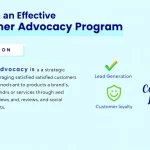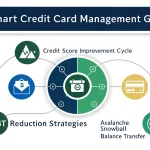Is this tool helpful?
How to Use the Distribution Plan Generator Effectively
Follow these steps to create a detailed and actionable distribution plan tailored to your business needs:
- Business Type Entry: Enter your business category or product type. Examples: “Organic skincare brand” or “Industrial equipment manufacturer”.
- Target Customer Definition: Define your ideal customer segment. Examples: “Tech startups in North America” or “Parents of toddlers”.
- Challenges Identification: Specify the key distribution obstacles your business faces. Examples: “High transportation costs in rural areas” or “Limited retailer partnerships”.
- Goals Specification: Outline clear, measurable distribution objectives. Examples: “Increase wholesale accounts by 25%” or “Reduce delivery times by 20%”.
- Budget Allocation: Optionally, provide the funds you have available for distribution activities. This helps prioritize practical strategies.
What the Distribution Plan Generator Does
This tool creates personalized distribution strategies based on the details you provide. It helps you analyze your business type, identify target markets, recognize challenges, and define your goals. Then it generates a structured plan to optimize your distribution channels and improve service delivery.
Key Benefits of Using the Generator
- Develop distribution plans tailored to your specific product and market.
- Identify and address operational challenges impacting delivery and logistics.
- Align distribution goals with realistic budgets and resource constraints.
- Get recommendations for channel selection, customer service improvement, and resource allocation.
- Save time in planning by receiving a clear roadmap to implement.
Practical Uses for the Distribution Plan Generator
You can apply this tool in various industries and scenarios to improve your distribution strategy:
Retail Sector
- Business Type: “Specialty coffee roasters”
- Target Customers: “Local cafés and gourmet food stores”
- Challenges: “Inconsistent delivery schedules, limited cold storage”
- Goals: “Increase delivery reliability by 35%, expand to 3 new cities”
Technology and Software
- Business Type: “Subscription-based cybersecurity software”
- Target Customers: “Small and medium law firms”
- Challenges: “Managing SaaS compliance across regions, customer onboarding speed”
- Goals: “Grow customer base by 40%, improve onboarding time by 50%”
Core Elements of an Effective Distribution Plan
- Channel Optimization: Choose and refine distribution channels based on customer access and cost efficiency.
- Customer Service Strategy: Ensure coordination of support channels and quick response times to improve satisfaction.
- Resource Management: Allocate budget, personnel, and equipment strategically for maximum impact.
- Performance Metrics: Define clear KPIs like delivery times, cost per unit, and market penetration rates.
- Timeline and Implementation: Plan immediate steps and long-term actions for sustainable distribution growth.
Step-by-Step Implementation Strategies
Short-Term Actions
- Identify and partner with appropriate distribution channels.
- Assign budget and workforce to critical initial tasks.
- Set up tracking systems for key distribution metrics.
- Develop training programs for logistics and customer service teams.
Long-Term Planning
- Create a roadmap to expand into new markets and channels.
- Integrate technology for automation and real-time tracking.
- Establish feedback loops for continuous improvement.
- Plan for scalability and adjust resources as your distribution network grows.
Frequently Asked Questions About Distribution Planning
How often should I update my distribution plan?
Review your distribution plan quarterly and update it annually or whenever you face major changes in market conditions or business goals.
What are the key metrics to track distribution success?
Focus on delivery speed, customer satisfaction ratings, cost per unit delivered, and market share growth.
Can I use multiple distribution channels?
Yes, using multiple channels ensures broader market coverage and reduces risks. Align channels with your capabilities and customer needs.
How do I balance cost and service quality in distribution?
Use data-driven decisions to find the sweet spot between efficient resource use and maintaining a high standard of customer service.
Key Success Factors for Your Distribution Plan
- Keep communication clear and consistent among all partners.
- Monitor performance closely to spot areas for improvement.
- Maintain flexibility to adapt quickly to market or supply changes.
- Foster strong relationships with distributors and retailers.
- Center your strategy around clear customer needs.
Risk Management in Distribution Planning
- Plan for fluctuations in market demand and supply chain disruptions.
- Build supply chain resilience through diversified sourcing and backup options.
- Implement quality control checkpoints throughout the distribution process.
- Ensure compliance with local regulations across distribution regions.
Techniques for Continuous Optimization
Ongoing Improvement Framework
- Conduct regular reviews of distribution metrics and outcomes.
- Integrate customer and partner feedback into strategy updates.
- Refine processes to eliminate bottlenecks and inefficiencies.
- Stay current with technology advancements that impact logistics and tracking.
Resource Allocation Methods
- Optimize your budget by prioritizing high-impact actions.
- Deploy your personnel according to skills and workload.
- Maximize equipment usage through maintenance and scheduling.
- Manage time effectively to meet distribution deadlines and targets.
Important Disclaimer
The calculations, results, and content provided by our tools are not guaranteed to be accurate, complete, or reliable. Users are responsible for verifying and interpreting the results. Our content and tools may contain errors, biases, or inconsistencies. Do not enter personal data, sensitive information, or personally identifiable information in our web forms or tools. Such data entry violates our terms of service and may result in unauthorized disclosure to third parties. We reserve the right to save inputs and outputs from our tools for the purposes of error debugging, bias identification, and performance improvement. External companies providing AI models used in our tools may also save and process data in accordance with their own policies. By using our tools, you consent to this data collection and processing. We reserve the right to limit the usage of our tools based on current usability factors.







